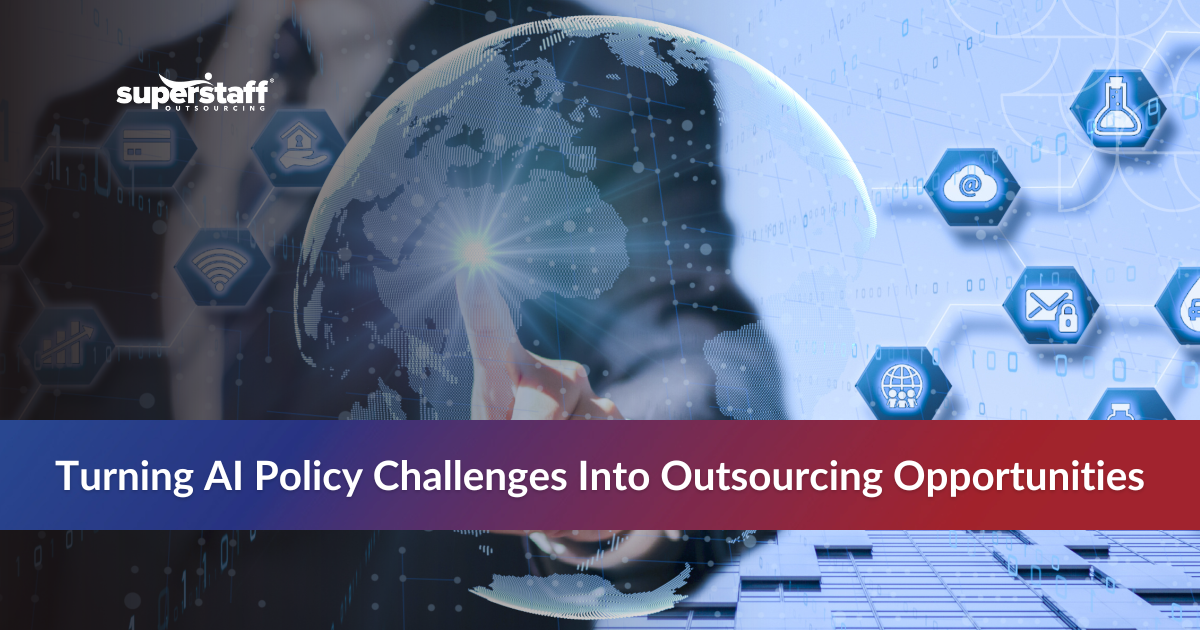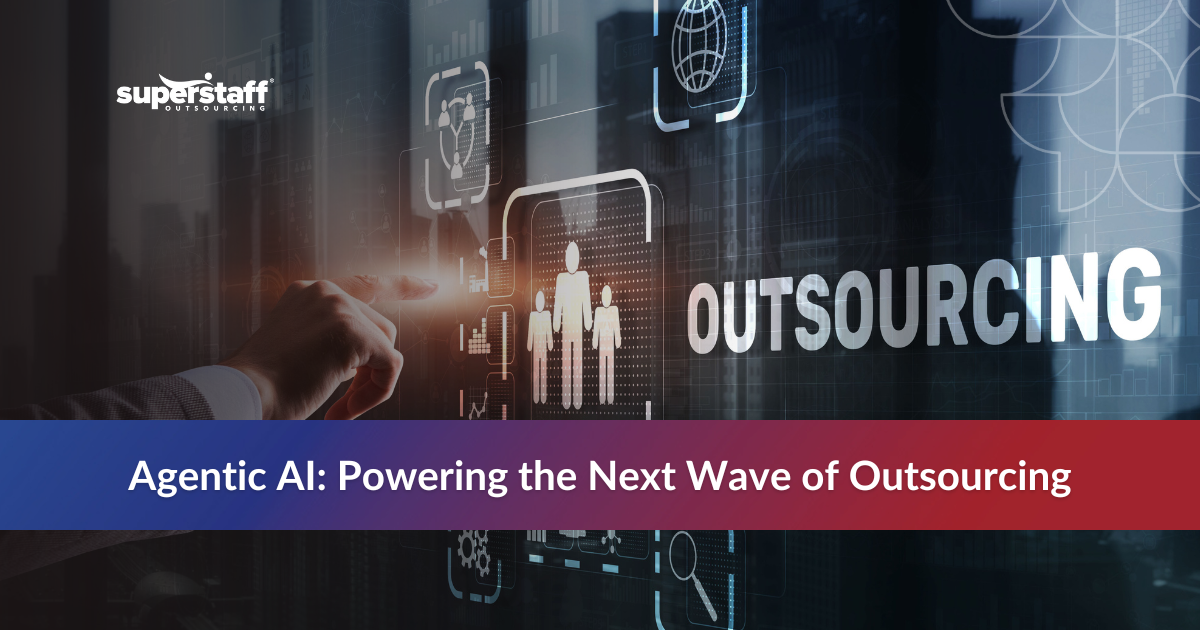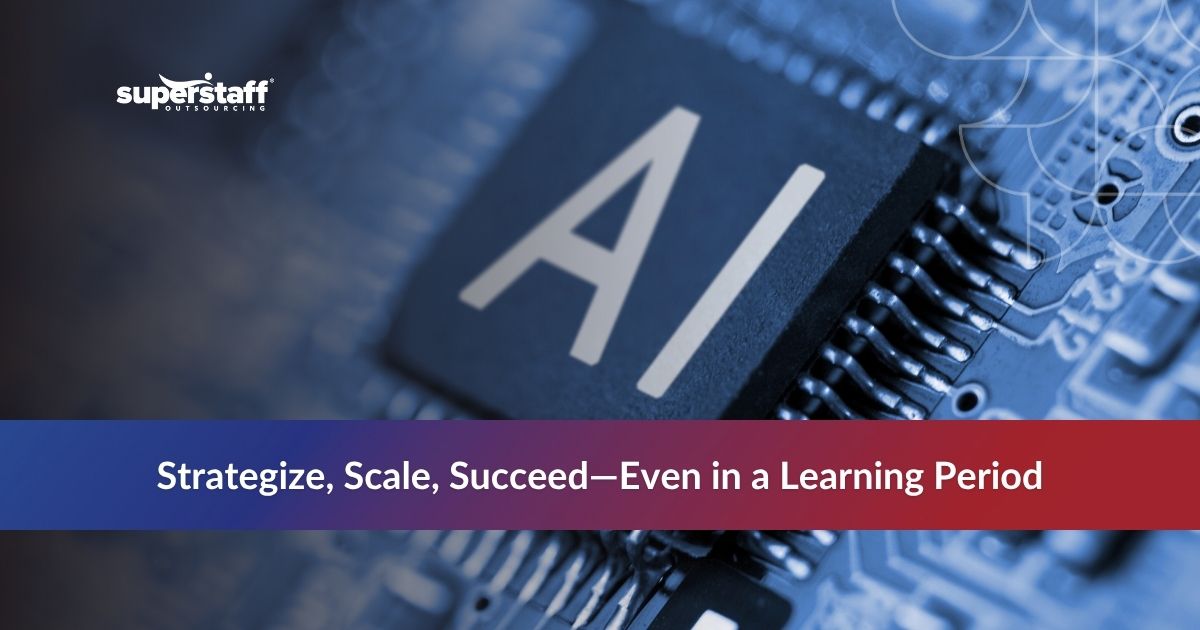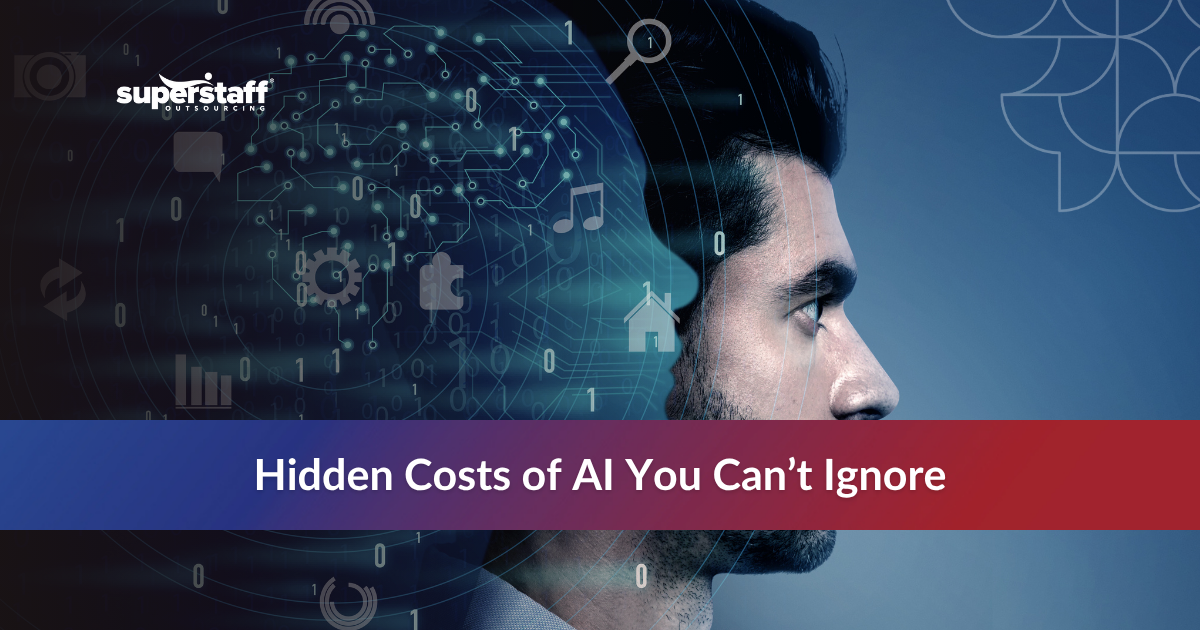
Companies love the idea of AI doing it all—fast, scalable, and smart. With outsourcing firms promoting plug-and-play solutions for customer service, data processing, and back office automation, it’s easy to imagine AI as the one-size-fits-all answer to efficiency. On the surface, everything appears frictionless: chatbots resolve customer queries instantly, AI handles workflows, and dashboards light up with predictive analytics.
But the deeper you go, the more you realize that the cost of implementing AI isn’t just about the initial setup or licensing fees. The real expense lies in what you don’t see—hidden infrastructure, ethical landmines, training burdens, and long-term limitations that creep up only after you’re fully invested. This blog unpacks the silent costs that come with outsourced AI solutions and offers decision-makers a realistic framework for evaluating what “seamless” really means.
The Illusion of ‘Set It and Forget It’
There’s a widespread misconception that AI systems, once deployed, can operate independently with minimal oversight. This belief fuels the push for “seamless AI” in outsourcing, where businesses expect smart systems to continually deliver results without additional effort. But the reality is far more complicated.
Behind every functioning AI system is a team—often an outsourced one—feeding data, monitoring accuracy, handling escalations, and retraining models as conditions change. If you’re working in industries like retail, healthcare, or fintech, you know how fast customer behavior or regulations can evolve. AI models need domain-specific, high-quality training data to keep up. And when that data shifts, so must the model.
This doesn’t just require time—it requires a blend of technical expertise and contextual understanding. Human analysts and QA specialists are still essential, particularly in maintaining AI powered customer service that reflects the brand’s tone and culture. The cost of implementing AI, then, includes these “invisible” human roles that make the system work the way it’s advertised.
Hidden Financial Costs You Didn’t Budget For
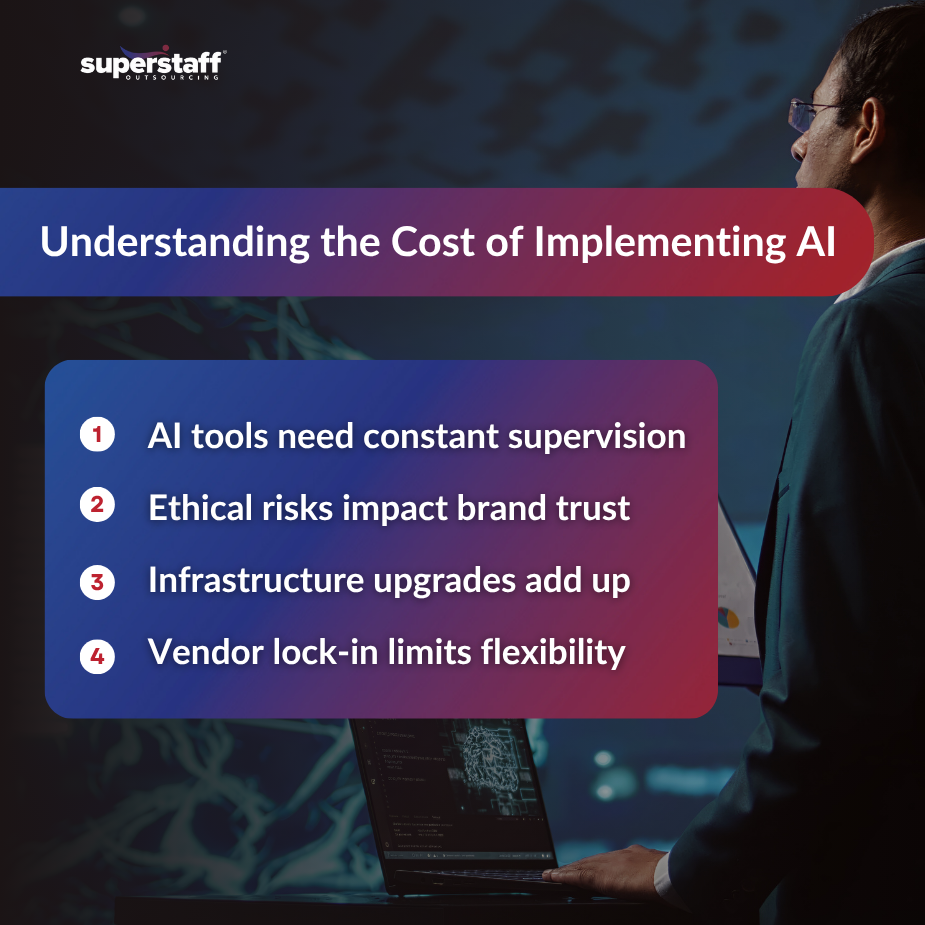
The appeal of AI in outsourcing is often framed around labor savings. Replace five agents with one chatbot, the pitch goes, and you’ll dramatically cut costs. What’s rarely included in that sales deck are the less-obvious costs that slowly chip away at your savings.
For starters, using AI platforms typically comes with SaaS subscription fees. Whether you’re relying on large language models or automation tools for back office tasks, expect to pay monthly—and for every additional user, feature, or API call. These costs scale quickly as your operation grows.
Then there’s the infrastructure side. Hosting AI tools often requires cloud upgrades, added bandwidth, data storage enhancements, and systems that can securely integrate across your tech stack. Many businesses also forget to account for compliance-related costs: GDPR, HIPAA, or SOC2 reviews to ensure your AI systems handle sensitive information appropriately.
These hidden layers contribute significantly to the cost of implementing AI. They may not be line items in your initial budget, but they’ll definitely show up in your quarterly reports.
Ethical Trade-Offs and Brand Risk
Artificial intelligence might be efficient, but it isn’t inherently ethical. And when you outsource AI functions, you’re often trusting third-party providers to make decisions that affect your brand’s integrity. This is especially risky when AI is used in content moderation, customer service, or hiring workflows.
One of the biggest risks lies in model bias. If your AI hasn’t been trained on diverse, representative data, it can generate outputs that reflect gender, racial, or regional biases—undermining your inclusivity efforts and damaging customer trust. In the context of AI powered customer service, this might look like tone-deaf responses, culturally insensitive messaging, or inappropriate escalations.
Outsourcing adds another layer of complexity. You may not know how your vendor is training their models or whether their team is equipped to catch and correct problematic behavior. Worse, some vendors prioritize speed and automation over transparency. You’re left with a black box—and when things go wrong, your brand takes the hit.
All these concerns circle back to the true cost of implementing AI: it’s not just technical. It’s reputational. And repairing that kind of damage takes far more than updating a dataset.
The Need for Human Supervision Never Disappears
Despite all the talk of AI replacing humans, reality tells a different story. Most AI systems—especially those used in customer-facing applications—still need human support to function at scale. In many cases, the better your AI, the more crucial your human-in-the-loop operations become.
This means that even when you outsource AI services, you’re still paying for human teams. Analysts monitor dashboards to catch anomalies, quality assurance teams audit outputs, and customer experience professionals handle escalations when AI falls short. Without this human safety net, businesses risk major CX breakdowns.
For example, if a chatbot misunderstands a cancellation request and auto-charges a customer, the fallout is instant: refund processes, negative reviews, churn. It only takes one mishap to lose a loyal client. Having trained staff who can intervene quickly is non-negotiable.
Training those staff members to understand AI systems is another expense often left out of initial projections. AI literacy is no longer a “nice to have”—it’s required. And upskilling your team, or ensuring your outsourcing partner does, adds to the overall cost of implementing AI.
Vendor Lock-In and Strategic Blind Spots
One of the least-discussed pitfalls of adopting seamless AI through outsourcing is vendor lock-in. Many AI providers use proprietary tools that don’t integrate easily with other platforms. At first, everything may feel streamlined—but over time, this dependency limits your agility.
You might discover that your chatbot platform doesn’t export conversation logs in a usable format, or that your analytics engine doesn’t allow third-party data pulls. These barriers make it hard to migrate, audit, or modify your systems as your business needs change.
More concerning is the black-box nature of many AI tools. If you don’t know how your vendor’s models arrive at decisions, it becomes difficult to explain outcomes to regulators, customers, or stakeholders. You’re left vulnerable, not just legally but strategically.
This dependency quietly raises the cost of implementing AI. You’re not just paying your vendor—you’re giving up control, flexibility, and often, data ownership. And that can cost far more than you think when the time comes to scale, pivot, or exit a contract.
What to Ask Your Outsourcing Partner Before You Commit
Not all outsourcing partnerships are created equal, especially when AI is involved. Before committing to a provider, it’s crucial to ask the right questions—ones that go beyond pricing and turnaround times.
Start by asking who owns the data and the models. If you’re training an AI on your customer data, make sure you retain rights and access. This affects your ability to switch vendors or adapt to regulatory changes.
Next, clarify how often models are updated and how errors are handled. A seamless AI system should still come with an escalation protocol—preferably one where you can intervene before customer satisfaction tanks.
Also, check whether your outsourcing partner has internal AI oversight teams. Are they just plugging in third-party tools, or do they have a real strategy for integrating AI into operations? These questions help you assess whether their “seamless” solution hides serious flaws.
This isn’t about being paranoid—it’s about being prepared. The cost of implementing AI gets higher when you skip due diligence. Transparency at the start prevents expensive surprises down the road.
The Silent Cost of Implementing AI: What You Can’t Afford to Miss
Seamless AI in outsourcing sounds like the perfect solution—until the invoice tells a different story. The allure of faster response times, predictive analytics, and reduced headcount is real. But so are the hidden costs that come with it.
From unexpected infrastructure needs and ethical risks to the ongoing need for human oversight and vendor entanglements, the cost of implementing AI is anything but one-dimensional. It requires a proactive mindset, a keen understanding of operational trade-offs, and a willingness to look beyond the surface.
At SuperStaff, we believe in delivering AI-human hybrid solutions that go beyond automation. We help businesses navigate the true cost of implementing AI by ensuring every solution is built with transparency, strategic foresight, and long-term value in mind. If you’re ready to explore the future of outsourcing without the surprises, let’s have that conversation today.

